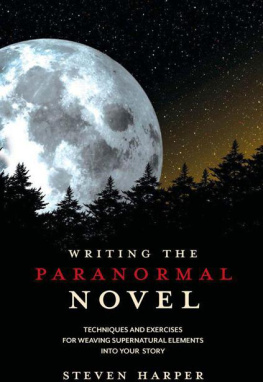Jones - A Novel Idea: Learn Plotting, Dialogue, Scene Development & Characterization in Under One Hour
Here you can read online Jones - A Novel Idea: Learn Plotting, Dialogue, Scene Development & Characterization in Under One Hour full text of the book (entire story) in english for free. Download pdf and epub, get meaning, cover and reviews about this ebook. year: 2013, publisher: Lighthouse Publishing of the Carolinas, genre: Children. Description of the work, (preface) as well as reviews are available. Best literature library LitArk.com created for fans of good reading and offers a wide selection of genres:
Romance novel
Science fiction
Adventure
Detective
Science
History
Home and family
Prose
Art
Politics
Computer
Non-fiction
Religion
Business
Children
Humor
Choose a favorite category and find really read worthwhile books. Enjoy immersion in the world of imagination, feel the emotions of the characters or learn something new for yourself, make an fascinating discovery.
A Novel Idea: Learn Plotting, Dialogue, Scene Development & Characterization in Under One Hour: summary, description and annotation
We offer to read an annotation, description, summary or preface (depends on what the author of the book "A Novel Idea: Learn Plotting, Dialogue, Scene Development & Characterization in Under One Hour" wrote himself). If you haven't found the necessary information about the book — write in the comments, we will try to find it.
DISCLAIMER
This book is the supporting material for novel writing class taught at writers conferences and in no way is meant to be a full-blown writing book. Class attendees asked for a cheap ebook and we complied.
The intent of this book is to present the basic elements of writing a novel in UNDER 60 MINUTES. Estimated word count is 15,000. In other words, it is a SHORT book. Content includes material from Kindle books: Plotting Simplified and Been There, Scene That!
BOOK DESCRIPTION
Plotting Simplified
We remember characters; we pitch plot. In Plotting Simplified youll learn how to map your story using the passage markers that shape every storys journey. From introduction and motivation to your Leads moment of maximum angst, youll see how easy it is to develop a story line and keep your characters on the path to a compelling climax. Learn how to introduce the Great Disturbance, what 4 Questions you should ask of your plot, how to map-out your story, manage your key scenes, the 7 Keys to every good plot, whyWorry, Conflict and Disaster spells success for the writer, and how to introduce your Major Dramatic Question.
Been There, Scene That!
Making a scene is as easy as: ABCD. A good scene reveals information that moves the story forward (new goals, old secrets, hidden motives), shows conflict between characters (adds tension), deepens the characters development, and creates suspense (introduces a new wrinkle that leaves the reader hanging). Learn the three keys to scene summary, how to create memorable moments in your story, what 4 questions you should ask of each scene. Learn professional secrets and begin crafting great scenes in just five minutes.
Dramatic Dialogue
Dialogue can breathe life into any fiction or non-fiction story. In this class we cover: Scene & space A scene is: Doing (Action) Thinking (Narrative) and Talking (Dialogue). Tools A writer has a number of tools for story building: narration, action, description, and dialogue Stickiness How dialogue sticks with us Tags When to tag, when to skip tags & where to place tags Types - Direct, Reflective, Misdirected, Modulated, Descriptive, Breathless, & Compressed Tips When to circle back, go silent, & add gestures Punctuation Where to put those marks and quotes.
Creating Compelling Characters
Compelling characters are larger than life. They risk more, laugh often and love with passion. In this session youll learn how to invent both likable and loathsome characters, winners and losers, heroes and villains. In this class youll learn how to build motivation, focus flaws, and and explore the feelings or your characters. Youll see how conflict, crisis and consequences shape your characters. Well show you how to find the right character for your story, motivate your hero and heroin, and how the off-beat sidekick can provide comic relief for your story.
Jones: author's other books
Who wrote A Novel Idea: Learn Plotting, Dialogue, Scene Development & Characterization in Under One Hour? Find out the surname, the name of the author of the book and a list of all author's works by series.















